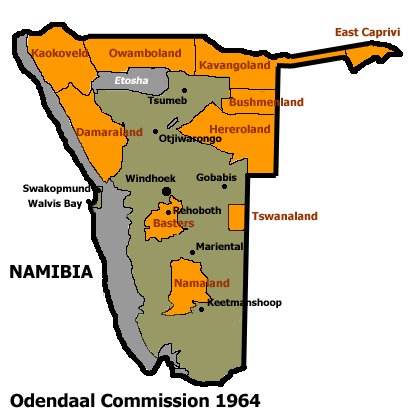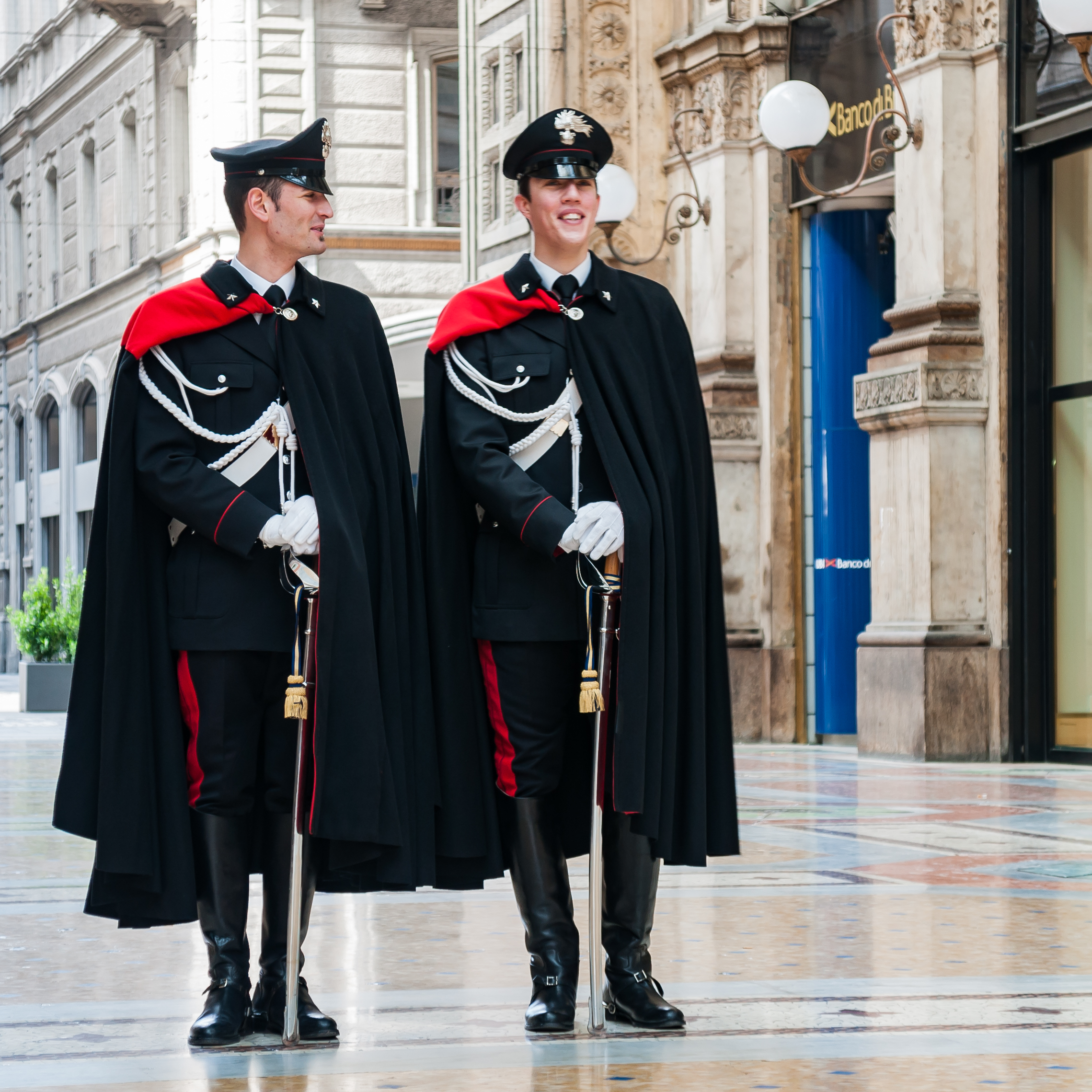|
South African Class NG5 2-8-2
The South African Railways Class NG5 2-8-2 of 1922 was a narrow-gauge steam locomotive. In 1922, the South African Railways placed six narrow-gauge steam locomotives with a Mikado type wheel arrangement in service on the Otavi Railway in South West Africa. When a system of grouping narrow-gauge locomotives into classes was eventually introduced somewhere between 1928 and 1930, they were designated Class NG5.Espitalier, T.J.; Day, W.A.J. (1947). ''The Locomotive in South Africa – A Brief History of Railway Development. Chapter VII – South African Railways (Continued).'' South African Railways and Harbours Magazine, December 1947. pp. 1033-1034. Manufacturer Six narrow-gauge steam locomotives were built for the South African Railways (SAR) by Henschel and Son in Germany in 1921. They were built to the same design as the three Class Hd locomotives which had been built in 1912 for the German administration in German South West Africa (GSWA) for leasing to the Otavi Mining ... [...More Info...] [...Related Items...] OR: [Wikipedia] [Google] [Baidu] |
Henschel & Son
Henschel & Son (german: Henschel und Sohn) was a German company, located in Kassel, best known during the 20th century as a maker of transportation equipment, including locomotives, trucks, buses and trolleybuses, and armoured fighting vehicles and weapons. Georg Christian Carl Henschel founded the factory in 1810 at Kassel. His son Carl Anton Henschel founded another factory in 1837. In 1848, the company began manufacturing locomotives. The factory became the largest locomotive manufacturer in Germany by the 20th century. Henschel built 10 articulated steam trucks, using Doble steam designs, for Deutsche Reichsbahn railways as delivery trucks. Several cars were built as well, one of which became Hermann Göring's staff car. In 1935 Henschel was able to upgrade its various steam locomotives to a high-speed Streamliner type with a maximum speeds of up to by the addition of a removable shell over the old steam locomotive. In 1918, Henschel began the production of gearboxes at ... [...More Info...] [...Related Items...] OR: [Wikipedia] [Google] [Baidu] |
South West Africa
South West Africa ( af, Suidwes-Afrika; german: Südwestafrika; nl, Zuidwest-Afrika) was a territory under South African administration from 1915 to 1990, after which it became modern-day Namibia. It bordered Angola ( Portuguese colony before 1975), Botswana ( Bechuanaland before 1966), South Africa, and Zambia (Northern Rhodesia before 1964). Previously the German colony of South West Africa from 1884–1915, it was made a League of Nations mandate of the Union of South Africa following Germany's defeat in the First World War. Although the mandate was abolished by the United Nations in 1966, South African control over the territory continued despite its illegality under international law. The territory was administered directly by the South African government from 1915 to 1978, when the Turnhalle Constitutional Conference laid the groundwork for semi-autonomous rule. During an interim period between 1978 and 1985, South Africa gradually granted South West Africa a limited ... [...More Info...] [...Related Items...] OR: [Wikipedia] [Google] [Baidu] |
1922 In South Africa
The following lists events that happened during 1922 in South Africa. Incumbents * Monarch: King George V. * Governor-General and High Commissioner for Southern Africa: Prince Arthur of Connaught.Archontology.org: A Guide for Study of Historical Offices: South Africa: Governors-General: 1910-1961 (Accessed on 14 April 2017) * : . * [...More Info...] [...Related Items...] OR: [Wikipedia] [Google] [Baidu] |
Railway Locomotives Introduced In 1922
Rail transport (also known as train transport) is a means of transport that transfers passengers and goods on wheeled vehicles running on rails, which are incorporated in tracks. In contrast to road transport, where the vehicles run on a prepared flat surface, rail vehicles (rolling stock) are directionally guided by the tracks on which they run. Tracks usually consist of steel rails, installed on sleepers (ties) set in ballast, on which the rolling stock, usually fitted with metal wheels, moves. Other variations are also possible, such as "slab track", in which the rails are fastened to a concrete foundation resting on a prepared subsurface. Rolling stock in a rail transport system generally encounters lower frictional resistance than rubber-tyred road vehicles, so passenger and freight cars (carriages and wagons) can be coupled into longer trains. The operation is carried out by a railway company, providing transport between train stations or freight customer facilit ... [...More Info...] [...Related Items...] OR: [Wikipedia] [Google] [Baidu] |
600 Mm Gauge Railway Locomotives
6 (six) is the natural number following 5 and preceding 7. It is a composite number and the smallest perfect number. In mathematics Six is the smallest positive integer which is neither a square number nor a prime number; it is the second smallest composite number, behind 4; its proper divisors are , and . Since 6 equals the sum of its proper divisors, it is a perfect number; 6 is the smallest of the perfect numbers. It is also the smallest Granville number, or \mathcal-perfect number. As a perfect number: *6 is related to the Mersenne prime 3, since . (The next perfect number is 28.) *6 is the only even perfect number that is not the sum of successive odd cubes. *6 is the root of the 6-aliquot tree, and is itself the aliquot sum of only one other number; the square number, . Six is the only number that is both the sum and the product of three consecutive positive numbers. Unrelated to 6's being a perfect number, a Golomb ruler of length 6 is a "perfect ruler" ... [...More Info...] [...Related Items...] OR: [Wikipedia] [Google] [Baidu] |
Henschel Locomotives
Henschel & Son (german: Henschel und Sohn) was a German company, located in Kassel, best known during the 20th century as a maker of transportation equipment, including locomotives, trucks, buses and trolleybuses, and armoured fighting vehicles and weapons. Georg Christian Carl Henschel founded the factory in 1810 at Kassel. His son Carl Anton Henschel founded another factory in 1837. In 1848, the company began manufacturing locomotives. The factory became the largest locomotive manufacturer in Germany by the 20th century. Henschel built 10 articulated steam trucks, using Doble steam designs, for Deutsche Reichsbahn railways as delivery trucks. Several cars were built as well, one of which became Hermann Göring's staff car. In 1935 Henschel was able to upgrade its various steam locomotives to a high-speed Streamliner type with a maximum speeds of up to by the addition of a removable shell over the old steam locomotive. In 1918, Henschel began the production of gearboxes at ... [...More Info...] [...Related Items...] OR: [Wikipedia] [Google] [Baidu] |
Steam Locomotives Of South Africa
Steam is a substance containing water in the gas phase, and sometimes also an aerosol of liquid water droplets, or air. This may occur due to evaporation or due to boiling, where heat is applied until water reaches the enthalpy of vaporization. Steam that is saturated or superheated is invisible; however, "steam" often refers to wet steam, the visible mist or aerosol of water droplets formed as water vapor condenses. Water increases in volume by 1,700 times at standard temperature and pressure; this change in volume can be converted into mechanical work by steam engines such as reciprocating piston type engines and steam turbines, which are a sub-group of steam engines. Piston type steam engines played a central role in the Industrial Revolution and modern steam turbines are used to generate more than 80% of the world's electricity. If liquid water comes in contact with a very hot surface or depressurizes quickly below its vapor pressure, it can create a steam explosion. Types ... [...More Info...] [...Related Items...] OR: [Wikipedia] [Google] [Baidu] |
Usakos
, nickname = , settlement_type = Town , motto = Excelsior , image_skyline = Usakos Luftaufnahme (2018).jpg , imagesize = 300 , image_caption = Aerial photograph of Usakos (2018) , image_flag = , flag_size = , image_seal = Wappen Usakos.jpg , seal_size = 120px , image_shield = , shield_size = , image_blank_emblem = , blank_emblem_type = , blank_emblem_size = , image_map = , mapsize = , map_caption = , pushpin_map = Namibia , pushpin_label_position =bottom , pushpin_mapsize =300 , pushpin_map_caption =Location in Namibia , subdivision_type = Country , subdivision_name = , subdivision_type1 = Region , subdivision_name1 = Erongo Region , subdivision_type2 = Constituency , subdivision_name2 = Karibib Constituency , subdivision_type3 ... [...More Info...] [...Related Items...] OR: [Wikipedia] [Google] [Baidu] |
Otjiwarongo
Otjiwarongo ( hz, beautiful place) is a city of 28,000 inhabitants in the Otjozondjupa Region of Namibia. It is the district capital of the Otjiwarongo electoral constituency and also the capital of Otjozondjupa. Otjiwarongo is situated in central-north Namibia on the TransNamib railway. It is the biggest business centre for Otjozondjupa Region. Otjiwarongo is located on the B1 road and its links between Windhoek, the Golden Triangle of Otavi, Tsumeb and Grootfontein, and Etosha National Park. It is one of Namibia's fast-growing towns, with a neat and peaceful quality environment and many excellent facilities, including supermarkets, banks, lodges, and hotels. Some of Namibia's best-known private game farms and nature reserves are located in and around the town. Otjiwarongo is one of Namibia's towns with a large population of German-speaking people. German influence is also evident in its Germanic buildings. The school "Donatus School Otjiwarongo" (D.S.O.) was once known ... [...More Info...] [...Related Items...] OR: [Wikipedia] [Google] [Baidu] |
Cape Gauge
A cape is a clothing accessory or a sleeveless outer garment which drapes the wearer's back, arms, and chest, and connects at the neck. History Capes were common in medieval Europe, especially when combined with a hood in the chaperon. They have had periodic returns to fashion - for example, in nineteenth-century Europe. Roman Catholic clergy wear a type of cape known as a ferraiolo, which is worn for formal events outside a ritualistic context. The cope is a liturgical vestment in the form of a cape. Capes are often highly decorated with elaborate embroidery. Capes remain in regular use as rainwear in various military units and police forces, in France for example. A gas cape was a voluminous military garment designed to give rain protection to someone wearing the bulky gas masks used in twentieth-century wars. Rich noblemen and elite warriors of the Aztec Empire would wear a tilmàtli; a Mesoamerican cloak/cape used as a symbol of their upper status. Cloth and cloth ... [...More Info...] [...Related Items...] OR: [Wikipedia] [Google] [Baidu] |






